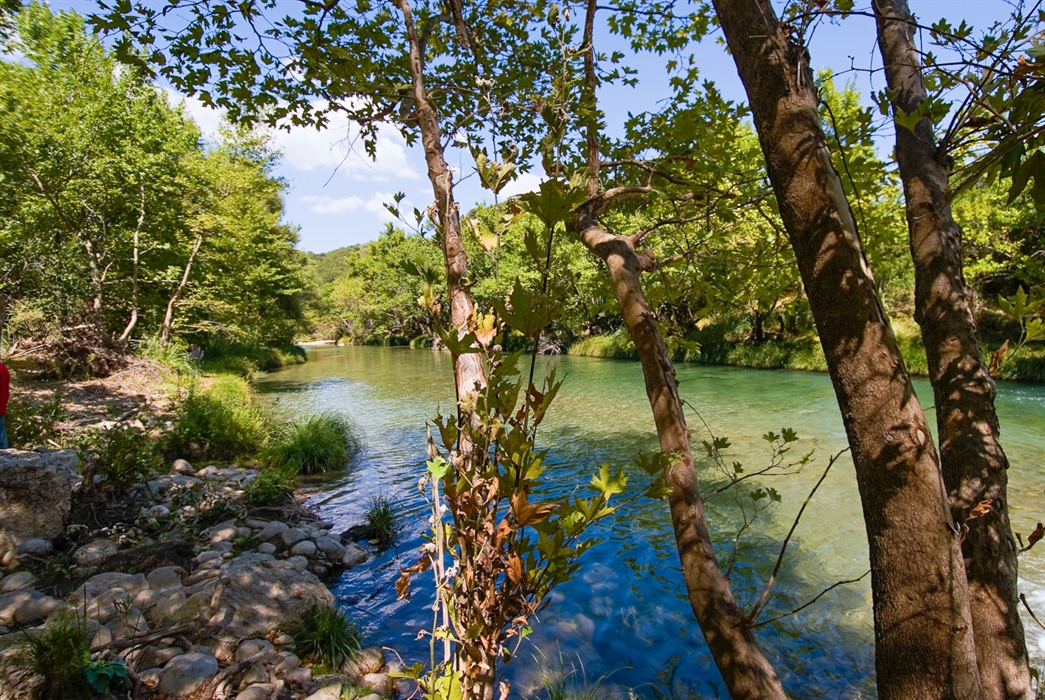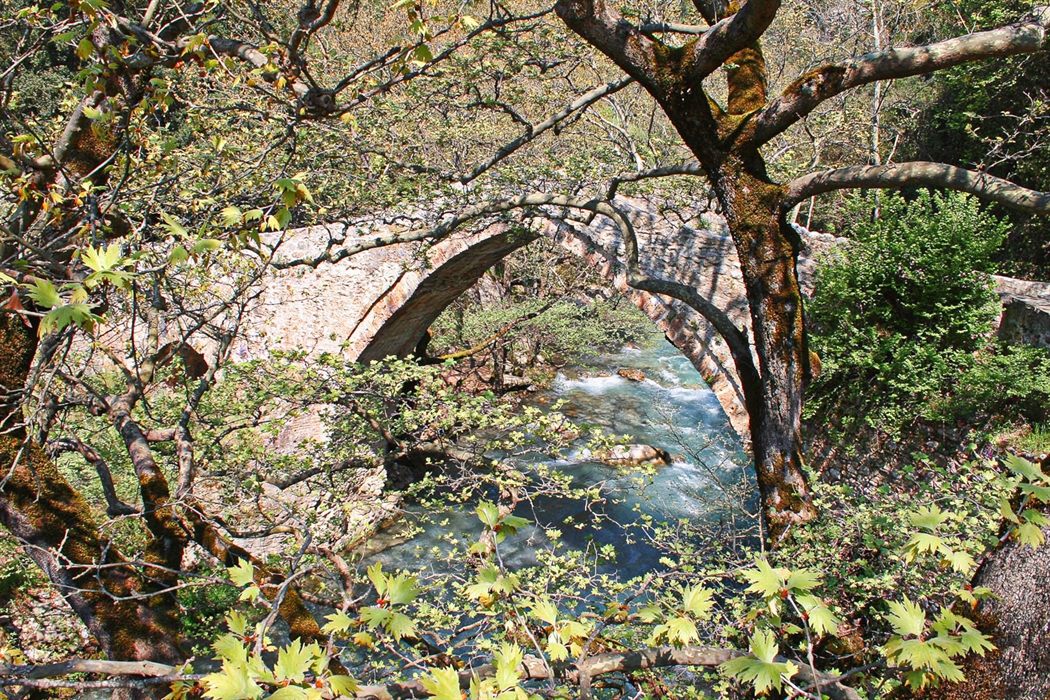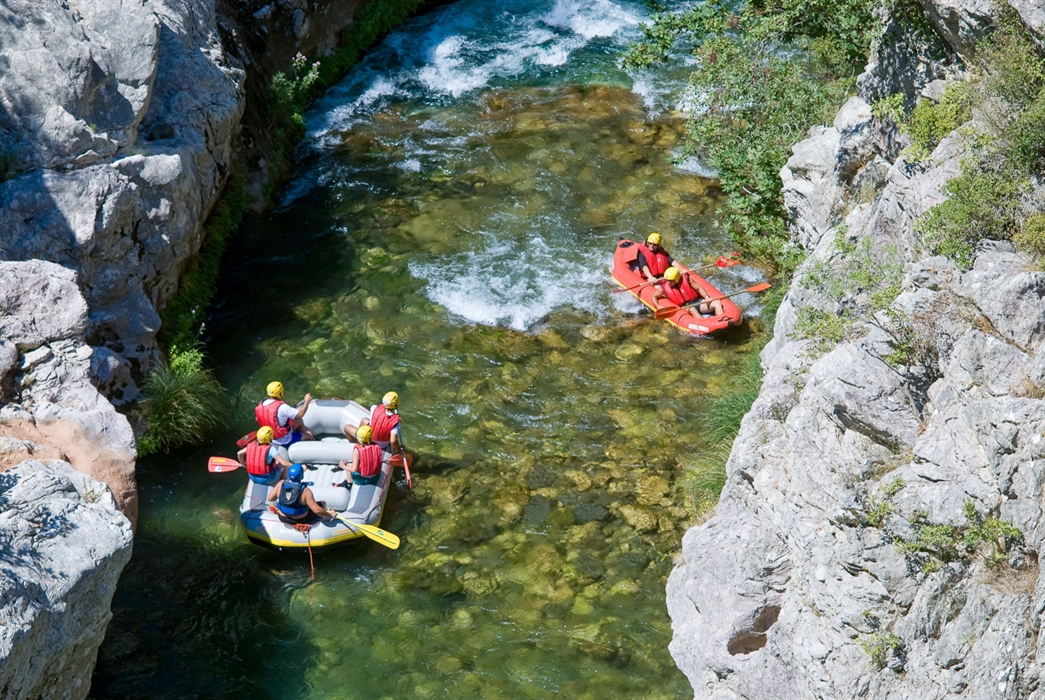Alfeios
Alfeios is the largest river in in the Peloponnese in terms of both water volume and length. Enjoy rafting, rappel, hydro speed or canoe kayak while passing through a large variety of different ecosystems.
We have a tendency to think of Greece as a beach destination, or maybe somewhere to go exploring ancient ruins. Or even as a “foodie” destination where the simplest village taverna can produce refreshing, healthy food. While all these versions of Greece are true and enchanting, there is also another side of the country waiting to be discovered – the natural beauty of inland Greece, and the Peloponnese in particular.
The Alfeios River is a good place to start. It is the largest river in in the Peloponnese in terms of both water volume and length (116 km), so it’s not surprising that it has a lot to offer. If you’re looking for something a little different, there are a number of companies based in Karytaina and around which organise rafting, canoeing and kayaking expeditions on the river. This is a great way to see Greece from an entirely new angle, both metaphorically and literally! You’ll be on the river for about 3-4 hours, navigating crystal clear waters sparkling in the sun as you go through canyons, past natural “rock sculptures”, and under old stone bridges. There are points where the trees meet over the river in a beautiful, shady tunnel and your guides will be able to give you any information you need. And if rafting is a change from your standard day at the beach, rappelling down a waterfall is something completely different! Or how about trying hydro speed where you forget about the boat and go down the river with nothing but your wetsuit, flippers and a hydro board?
Flora and Fauna. Not surprisingly for a long river, the Alfeios passes through a large variety of different ecosystems. Down by the river you will most likely see plane trees, large silver holly trees, oleanders and the interestingly named chaste tree. If you look up at the hills surrounding the river you’ll see kermes oaks, arbutus unedo (known as strawberry trees) and maple trees. The water is clean and clear, so you might see some of the 22 species of fish that live in the river, and of course the river and its surrounds are also home to amphibians, birds and mammals. On the other hand, if you follow the river to its end after it has joined the Lousious River, you’ll be in a completely different ecosystem. The river mouth is in the north of the bay of Kyparissia, with a wide valley leading to a delta where the river meets the sea. These wetlands are an important habitat for many species so they have been included in the Natura 2000 network and are protected by the Ramsar treaty.
The stone bridges over the Alfeios. There are some interesting bridges over the river, including the five-arched bridge at Karytaina. This unusual bridge might look familiar if you visited Greece any time before 2002 as it used to be on the 5000 drachma note. It is just outside the village (signposted) and was originally built by the Franks in the 13th century with five unequal arches, (although only three are still standing today).
Another bridge to watch out for is the single-arch bridge at Koukos which is built high above the river at its narrowest point between the villages of Vlahorrafti and Theisoa. This bridge was built in 1880 and is still in good condition.
And of course, Greek mythology has a story or two to tell us about the river! It played a starring role in the fifth labour of Hercules, as he cunningly diverted the river to clean out the king’s stables. After this Hercules established an alter to Alpheus at Olympia. And who was Alpheus? Well clearly the river was named after him and he was the son of Oceanus and Tethys - or the Sun according to another version of the story - and was worshiped at Olympia as a river deity.
*We have also used material from naturagraeca.com
Location
Find the destination on the interactive map below.
Categories
Weather
Σχετικό περιεχόμενο χρηστών (UGC)
Ενημερωθείτε για ενδιαφέροντα θέματα γύρω από τον προορισμό μέσα από το περιεχόμενο των χρηστών μας
Discover 7 hidden gems of the Peloponnese
Many of you may have already visited some of the most renowned attractions…
TOP 10 archaeological museums in the Peloponnese
Olympia, Mycenae, Epidaurus, Diros Cave, Ancient Corinth, Messene and…
TOP 10 Castles in the Peloponnese
Castles galore! Mystras, Monemvasia, Palamidi, Methoni, Koroni,…
Newsletters
- About us
- FAQ's
- Map
- Tourism information centers
- Disclaimer
- Sitemap
- Our brand
- Media roum
- Adding your bussiness
- Corporate
- MICE

Peloponnese. Greece beyond the obvious





Design and creation from Cosmote
Marinas and Moorings
Diving centers
Get inspired
- Media gallery
- Blog
- The Peloponnese in the media
- Your feedback
- Users' general content
- Users' local products
- Users' events content
- Ask a local
More
- Accommodation
- Travel agencies
- Restaurants
- Services
- Destinations Map
- Weather
- Public transport
- Events
- Frequently asked questions
- Useful phones
- B2B
- Destination Data
- Contact



